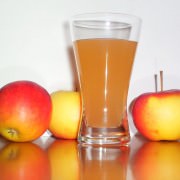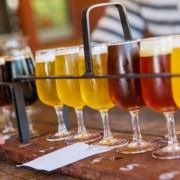Will Your Servers Make These Wine Pairing Mistakes Tonight?
It’s a Friday night and your restaurant is packed. You made sure your servers clearly understood each of the specials, and that they are upselling things like specials. You’ve trained them to walk diners through each detail and ingredient of your menu, and you even know that they can discuss how each dish is prepared. You’ve done a good job hiring servers who are kind and attentive to your customers’ every need, but, we’re sorry to tell you, unless you’ve trained your servers about good wine pairing, they are destroying your return business and not maximizing your profit. Here are three common wine pairing mistakes that your servers are making right now.
Wine Pairing 101
They aren’t thinking about the characteristics of the dishes being ordered. Wine pairing at its most basic level is simply considering textures and flavors in both the food and the wine. If a diner orders a heavy meal, pair it with a heavy wine. If they order a mild-tasting meal, pair it with a mild-tasting wine. This is Wine Pairing 101, but many servers have only that hazy advice that red meat should be paired with red wine, and that chicken and fish go with white wine. Are your servers suggesting mild reds with bold dishes? Are they mixing light meals with heavy wines? Make sure that your servers understand the texture and flavors of all the foods and wines on your menu, and their experience will get them to suggest great wine pairings that your customers will love.
They’re mixing acids with cream. This innocent mistake can destroy a diner’s experience at your restaurant. Right now, there is a customer at table three, who has heard great reviews of your Chicken Alfredo. Your starry-eyed customer wants the best experience possible, so she asks your server what wine the server recommends with the Chicken Alfredo. Your server, having heard that wine wines go well with chicken, recommends the Sauvignon Blanc. After all, it is a delicious wine. Then, when your customer tries this delicious and acidic wine with her creamy and luscious Chicken Alfredo… a taste washes over her tongue as if a lemon has been squeezed into a cup of milk and now her Alfredo tastes like sour, chunky milk. (Ewww!) Make sure that your servers know all about wine’s acidity to assure that this never happens again.
They’re suggesting subtle reds with spicy food. This same well-intentioned server has another customer who wants to order the Pasta Arrabbiata. It’s a red sauce, so clearly, it will go well with red wine. Your server recommends the fabulous Pinot Noir your restaurant just added to the menu. Now, the Pinot isn’t a terrible combination with the Arrabbiata, it’s just a boring combination. The spicy flavor of the Arrabbiata will easily overpower the Pinot, and your guest’s likelihood of ordering a second bottle or glass falls lower and lower with each dull, tasteless sip. Don’t let your servers make this mistake, teach them that spicy dishes require spicy, bold wines!
There is an easy way to avoid all of these terrible mistakes: it begins with good staff training. However, sometimes even servers have bad nights and forget the exact taste of a dish, or the exact properties of a wine they don’t drink often. For these nights, we’d recommend listing wine pairing suggestions on your menu. Ordering your wine list progressively from light to full-bodied also helps your servers find the right pairing. Your customers love interacting with their menu, and want to learn more. Here’s a unique idea: use a digital wine menu to upsell your dinner menu. With well-worded wine pairing suggestions, everyone is happier and your customers will return again and again.
- Why Your Wine Menu Is Scaring Your Guests - February 27, 2015
- How to Host a Better Restaurant Week and Get More Customers - February 23, 2015
- Choosing Your Restaurant Wine Glass – 3 Approaches - February 16, 2015









